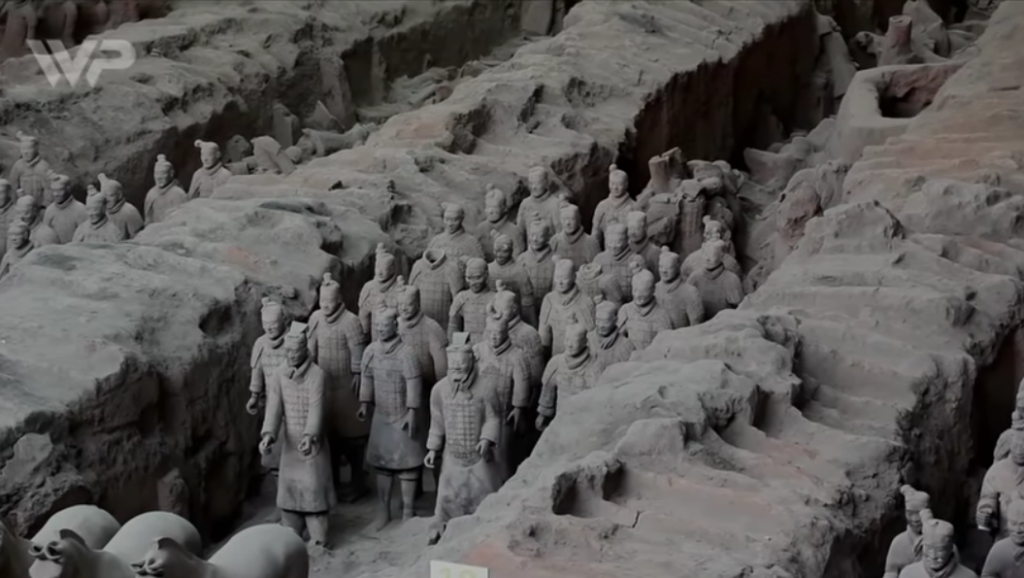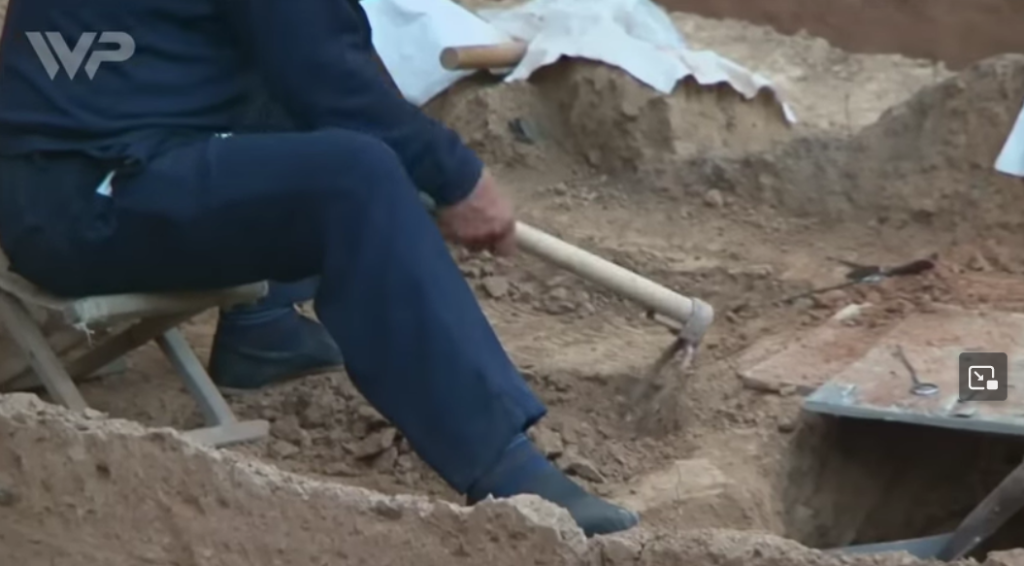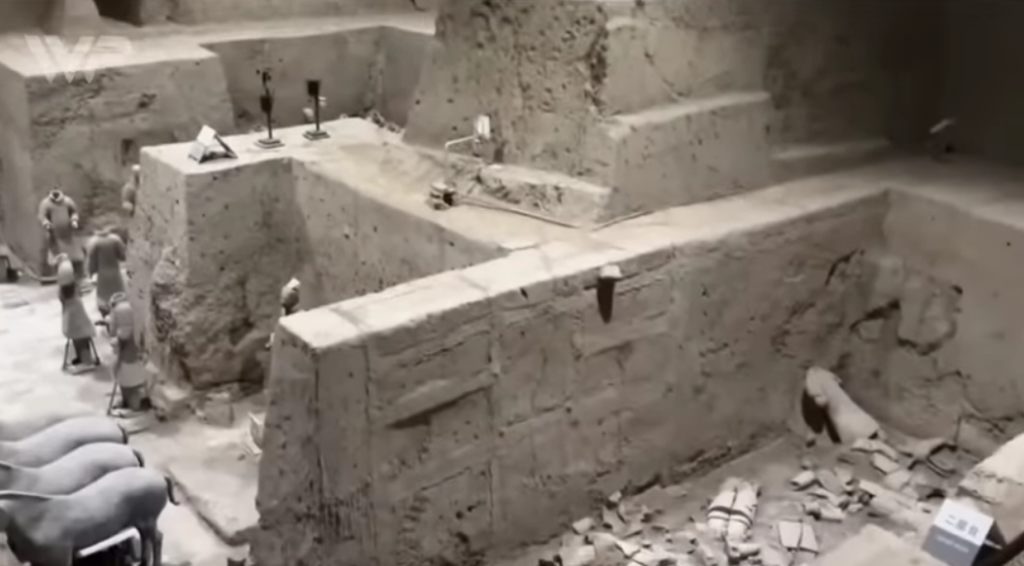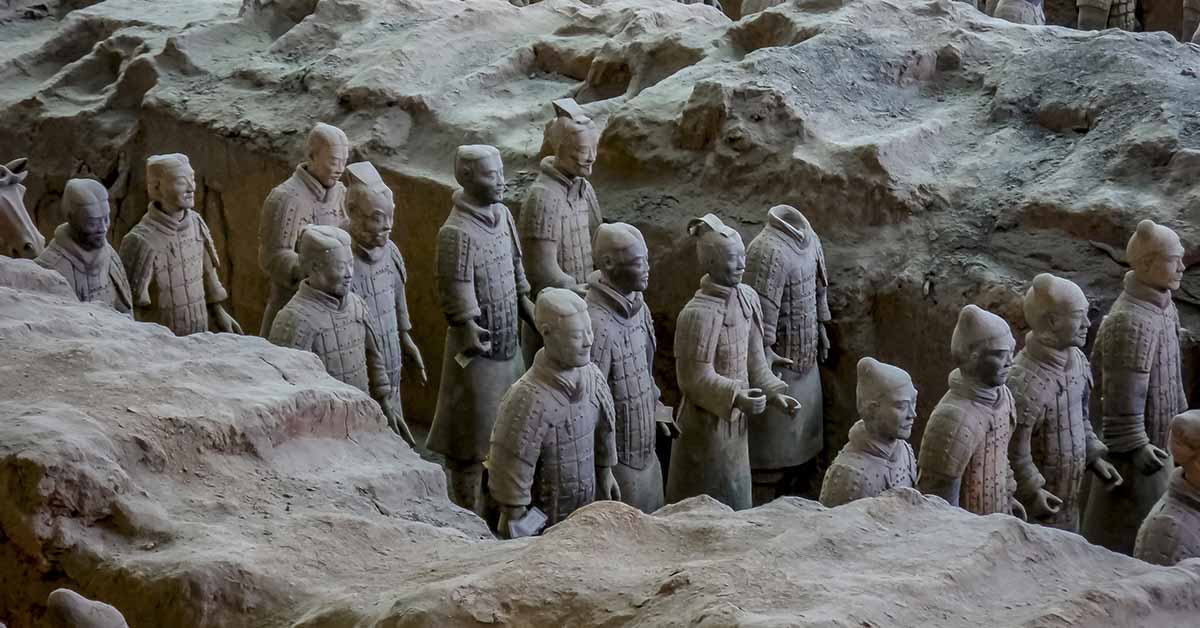The Terracotta Army, an awe-inspiring archaeological wonder, is a testament to the grandeur and vision of China’s first emperor, Qin Shi Huang. Hidden within the sprawling tomb complex in the ancient city of Xi’an, this incredible display of craftsmanship and historical significance has captivated the world since its discovery in 1974. Since it was first explored, there is still one tomb that was left unopened. It belonged to the emperor himself. To this day, archaeologists are too afraid to open it. Here’s why.
The Guardians of Emperor Qin Shi Huang’s Tomb
Qin Shi Huang, born in 259 BCE, ascended the throne at the tender age of 13 and unified China under his rule by 221 BCE. He called himself the first emperor of the Qin Dynasty, a title he maintained throughout his life. Then, he embarked on a journey to create the Great Wall of China and the Terracotta Army. The construction of the Terracotta Army began in 246 BCE, shortly after Qin Shi Huang assumed the throne. It is believed that the purpose of the Terracotta Army was to guard the emperor in the afterlife and to symbolize the emperor’s might and authority even in death. Moreover, this awe-inspiring collection of life-sized warriors and horses was built to protect China’s first emperor in the afterlife. It showcases the grandiosity of Emperor Qin Shi Huang’s rule.
To create the Terracotta Army, thousands of skilled artisans and laborers worked diligently for over 40 years. They carefully crafted each figure with great attention to detail. Moreover, these figures were shaped from clay and fired in kilns, giving them their terracotta appearance. The workforce employed in this monumental task was likely composed of conscripted laborers and skilled craftsmen from across the empire. And so, the Terracotta Army remains one of the most significant archaeological discoveries in history.
Read: The biggest ancient city you’ve probably never heard of is in Illinois

Why Are Archaeologists Afraid to Open the Emperor’s Tomb?
The Terracotta Army is not the only figure found in the tomb’s complex. There were also figures from the court and others thought to be beloved by the emperor who were entombed with him. In 1974, the tomb was discovered miraculously in the Shaanxi province of China. Since then, archaeologists have explored the outer tombs in detail, but one tomb remains a mystery and will remain so for some time. Why? Well, one thing is for sure, it’s definitely not because they are too afraid of what they might find inside the tomb. This is definitely not an Indiana Jones movie.

Archaeologists hesitate to explore the tomb due to genuine concerns about the potential damage. In other words, no one wants to risk losing the historical discovery or the information that could come with it. The currently available techniques for entering the tomb are invasive and pose a high risk of causing irreparable harm. This has left them cautious about going forward.
They are learning from Heinrich Schliemann’s mistakes and his explorations of Troy in the 1870s. His haste and lack of experience led to the inadvertent destruction of nearly all remnants of the very city he aimed to reveal. Archaeologists are determined not to repeat such careless mistakes and are keen on exercising patience and precision during their endeavors.
Read: Ancient Bronze Age Couple Found in Loving Embrace 3000 Years After Burial

Potential Booby-Traps
Some fear perilous hazards inside the tomb, awaiting anyone who dared open it. This was described in a text written by an ancient Chinese historian Sima Qian, approximately a century after the passing of Emperor Qin Shi Huang.
Sima Qian wrote: “Palaces and scenic towers for a hundred officials were constructed, and the tomb was filled with rare artifacts and wonderful treasure. Craftsmen were ordered to make crossbows and arrows primed to shoot at anyone who enters the tomb. Mercury was used to simulate the hundred rivers, the Yangtze and Yellow River, and the great sea, and set to flow mechanically.”
So, the excavators might be able to surpass the arrows, but the toxic Mercury is a massive problem. Researchers have validated the concerns because they have recorded high amounts of mercury surrounding the tomb. So, the tomb remains unopened until they have discovered less invasive exploring methods. However, they are currently investigating non-invasive methods.
Keep Reading: Archeologists discovered a 17th-century Polish ‘vampire’ with a sickle across her neck meant to prevent a return from the dead
Sources
- “Why Archeologists Are Too Scared To Open The Tomb Of China’s First Emperor. IFLscience. Tom Hale. January 11, 2023
- “Archaeologists are too scared to look inside the tomb of China’s first Emperor.” Unilad. Kit Roberts. July 2023.

